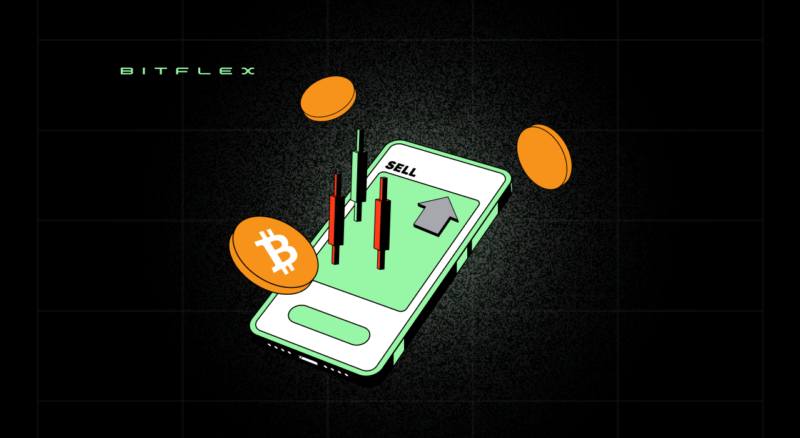Cryptocurrency has been around for over a decade now, and while some have invested in it, others have decided to sell their holdings. If you’re trying to sell your cryptocurrency but aren’t sure where to start, this step-by-step guide will lead you through the process.
Understanding the Basics of Cryptocurrency
What is Cryptocurrency?
Cryptocurrency is a type of digital currency that is secured using cryptography. Unlike traditional currency, it is decentralized and not controlled by any government or financial institution. This means that there is no central authority governing the transactions, and the users have complete control over their funds. Cryptocurrency transactions are recorded using a blockchain, which is a distributed ledger that ensures transparency and security.
The concept of cryptocurrency was first introduced by an unknown person or group of people using the pseudonym Satoshi Nakamoto in 2009. The first and most well-known cryptocurrency is Bitcoin, which has paved the way for many other cryptocurrencies to follow.
Types of Cryptocurrencies
There are several types of cryptocurrencies, each with its own unique features and uses. Some of the most popular cryptocurrencies are:
- Bitcoin (BTC): This is the first and most well-known cryptocurrency. It is used as a store of value and a medium of exchange.
- Ethereum (ETH): This cryptocurrency is known for its smart contract capabilities, which allow developers to build decentralized applications (dapps) on its blockchain.
- Tron (TRX): This is a blockchain system focusing on creating a global, free digital content entertainment infrastructure.
- Binance Coin (BNB): This is the native currency of the Binance exchange, offering fee reductions and powering its Smart Chain.
- Cardano (ADA): This is a third-generation crypto with a two-layer architecture, aiming to solve prior issues and foster a resilient financial system.
There are also many other cryptocurrencies, including Dogecoin, Binance Coin, and Cardano, among others.
How Cryptocurrency Transactions Work
Cryptocurrency transactions involve sending and receiving digital currency using a public key. When you send cryptocurrency, you sign the transaction using your private key, which proves that you own the coins. The transaction is then broadcast to the network and added to the blockchain, where it is verified by other users before being completed.
One of the key benefits of cryptocurrency transactions is that they are fast and secure. Transactions can be completed in a matter of seconds or minutes, and the blockchain ensures that they are tamper-proof and transparent.
However, there are also some challenges associated with cryptocurrency transactions. For example, if you lose your private key, you may lose access to your funds forever. Additionally, the value of cryptocurrencies can be highly volatile, which means that their value can fluctuate wildly in a short period of time.
Despite these challenges, many people are still drawn to cryptocurrencies because of their potential to disrupt traditional financial systems and provide greater financial freedom.
Choosing the Right Platform to Sell Cryptocurrency
Cryptocurrency has become increasingly popular in recent years, with many investors looking to buy and sell digital currencies. If you’re looking to sell your cryptocurrency, it’s important to choose the right platform to ensure a smooth and secure transaction.
Cryptocurrency Exchanges
Cryptocurrency exchanges are one of the most popular ways to buy and sell digital currencies. These online platforms offer a range of features and services, such as wallet storage, trading pairs, and order types. Some of the most well-known exchanges include Coinbase, Binance, Kraken and Coinflare, to name a few.
When choosing an exchange, it’s important to consider factors such as security, fees, and trading volume. You should also research the exchange’s reputation and read reviews from other users to ensure that it’s a trustworthy and reliable platform.
Peer-to-Peer Platforms
Peer-to-peer (P2P) platforms provide a decentralized alternative to exchanges. These platforms allow you to buy and sell cryptocurrency directly with other individuals, without the need for a central authority. P2P platforms can offer more privacy and lower fees than exchanges, but they can also be less secure and have less liquidity.
Some of the most popular P2P platforms include LocalBitcoins and Paxful. When using a P2P platform, it’s important to take extra precautions to ensure that you’re dealing with a trustworthy buyer or seller.
Decentralized Exchanges
Decentralized exchanges (DEXs) are a newer type of platform that use blockchain technology to enable direct, peer-to-peer transactions. DEXs offer more security and privacy than other platforms, as there is no central authority that can be hacked or compromised. However, DEXs can have less liquidity and higher fees than other platforms. When using a DEX, it’s important to be familiar with the platform’s user interface and to understand how to use it securely.
Factors to Consider When Choosing a Platform
When choosing a platform to sell your cryptocurrency, there are several factors to consider:
- Security: Look for platforms that offer two-factor authentication and other security measures to protect your funds.
- Fees: Consider the fees charged by the platform for buying and selling cryptocurrency.
- Trading Volume: Look for platforms with high trading volume to ensure that you can buy and sell your cryptocurrency quickly.
- User Experience: Choose a platform with a user-friendly interface that you feel comfortable using.
- Reputation: Research the platform’s reputation and read reviews from other users to ensure that it’s a trustworthy and reliable platform.
By considering these factors and doing your research, you can choose the right platform to sell your cryptocurrency and ensure a smooth and secure transaction.
Preparing to Sell Your Bitcoin
Are you considering selling your Bitcoin? Before you do, there are a few important steps you should take to ensure that your transaction goes smoothly and securely.
Securing Your Bitcoin Wallet
One of the most important steps in preparing to sell your Bitcoin is securing your wallet. A BTC wallet is a digital wallet that allows you to store, send, and receive Bitcoin. There are three main types of BTC wallets: hardware wallets, software wallets, and web wallets.
A hardware wallet is the most secure option for storing your Bitcoin. These wallets are physical devices that store your private keys offline, making them less vulnerable to hacking and other security threats. However, hardware wallets can be expensive and may not be the most convenient option for everyone.
Software wallets are digital wallets that are installed on your computer or mobile device. These wallets can be a good option for those who want a balance of security and convenience. However, they can be vulnerable to hacking and malware attacks.
Web wallets are online wallets that can be accessed from anywhere with an internet connection. While they are convenient, they are generally considered to be the least secure option for storing cryptocurrency. If you choose to use a web wallet, be sure to choose a reputable provider with a strong track record of security.
Setting Up Two-Factor Authentication
Another important step in securing your Bitcoin is setting up two-factor authentication (2FA). 2FA adds an extra layer of security to your account by requiring a second form of verification, such as a code sent to your phone, in addition to your password. This can help prevent unauthorized access to your account and protect your cryptocurrency from theft.
Monitoring the Market and Identifying the Right Time to Sell
The value of Bitcoin can be highly volatile, so it’s important to monitor market trends and news to identify the right time to sell. This can involve analyzing price charts, keeping up with current events, and consulting with experts.
One important factor to consider is the overall market trend. If the market is in a bearish trend, it may be best to hold onto your BTC until the market stabilizes or enters a bullish trend. On the other hand, if the market is in a bullish trend, it may be a good time to sell and take profits.
Another important consideration is any news or events that may impact the value of your Bitcoin. For example, if a major exchange announces that it will no longer support a particular cryptocurrency, this could cause the value of that cryptocurrency to plummet. Keeping up with news and events can help you make informed decisions about when to sell your Bitcoin.
Ultimately, the decision to sell your Bitcoin is a personal one that depends on your individual financial goals and risk tolerance. By taking steps to secure your wallet and staying informed about market trends and news, you can make a well-informed decision about when to sell your BTC.
Step-by-Step Guide to Selling Bitcoin (BTC)
If you’re looking to sell your cryptocurrency, you’ve come to the right place. Selling Bitcoin can be a great way to cash out on your investment, but it’s important to do it right. In this step-by-step guide, we’ll walk you through the process of selling your BTC on a platform.
Step 1: Registering on a Platform
The first step to selling your cryptocurrency is to register on a platform of your choice. There are many platforms out there, so it’s important to do your research and choose one that’s reputable and trustworthy. This typically involves providing your email address, creating a password, and verifying your account.
When choosing a platform, it’s important to consider factors such as fees, security, and ease of use. Some platforms may charge high fees for transactions, while others may have complicated interfaces that make it difficult to navigate. Take the time to read reviews and compare different platforms before making a decision.
Step 2: Verifying Your Identity
Most platforms require you to verify your identity by submitting a government-issued ID and a selfie. This is to comply with anti-money laundering (AML) and know-your-customer (KYC) regulations. While this may seem like a hassle, it’s an important step in ensuring the security and legitimacy of the platform.
When submitting your ID and selfie, make sure to follow the platform’s guidelines carefully. This may involve taking a photo of yourself holding your ID, or submitting a scan of your ID along with a separate selfie. Make sure the images are clear and legible, and that all the information matches up.
Step 3: Depositing Your Bitcoin
Once your account is verified, you can deposit your BTC into your wallet on the platform. This is typically done by transferring the Bitcoin from your personal wallet to your wallet on the platform.
When depositing your Bitcoin, make sure to double-check the wallet address and any other information required by the platform. BTC transactions are irreversible, so it’s important to get it right the first time.
Step 4: Placing a Sell Order
To sell your cryptocurrency, you need to place a sell order on the platform. This involves specifying the amount of BTC you want to sell, as well as the price and type of order you want to place.
When placing your sell order, make sure to consider the current market conditions and set a realistic price. You may also want to consider placing a limit order, which allows you to specify the minimum price you’re willing to accept for your cryptocurrency.
Step 5: Withdrawing Your Funds
Once your sell order is filled, you can withdraw your funds from the platform. This typically involves specifying the account you want to withdraw to and providing any necessary information.
When withdrawing your funds, make sure to double-check the account information and any other details required by the platform. Some platforms may charge withdrawal fees or have minimum withdrawal amounts, so make sure to read the fine print.
And there you have it – a step-by-step guide to selling your Bitcoin on a platform. While the process may seem daunting at first, it’s important to take the time to do it right. By following these steps and doing your research, you can sell your Bitcoin with confidence and ease.
Tips for Successful Bitcoin Selling
Cryptocurrency has revolutionized the way we think about money and investing. With the rise of Bitcoin, Ethereum, and other digital currencies, more and more people are looking to cash in on the market. However, selling cryptocurrency can be a tricky business. Here are some tips to help you navigate the world of cryptocurrency selling and maximize your profits.
Understanding Market Trends
One of the most important factors to consider when selling Bitcoin is market trends. Just like any other investment, the value of digital currencies can fluctuate wildly based on a variety of factors, including global events, government regulations, and even social media buzz. Keeping up with market trends and news can help you identify the right time to sell your BTC and maximize your profits.
For example, if you notice that a particular cryptocurrency is experiencing a surge in value, it might be a good time to sell. On the other hand, if the market is experiencing a downturn, it might be wise to hold onto your cryptocurrency until the market stabilizes. By keeping a close eye on market trends, you can make informed decisions about when to sell your digital assets.
Diversifying Your Cryptocurrency Portfolio
Another key strategy for successful cryptocurrency selling is diversification. While it can be tempting to go all-in on a single digital currency, this can be a risky move. Cryptocurrency markets are notoriously volatile, and a sudden drop in value can wipe out your entire investment.
Instead, consider diversifying your cryptocurrency holdings. This means investing in multiple digital currencies, as well as other assets such as stocks, bonds, and commodities. Diversification can help mitigate the risks of market volatility and ensure that you have a more stable and profitable portfolio.
Of course, diversification requires careful research and planning. You’ll need to do your homework to identify promising cryptocurrencies and other assets, and you’ll need to balance your portfolio to minimize risk and maximize returns. But with the right strategy, diversification can be a powerful tool for successful cryptocurrency selling.
Keeping Track of Tax Implications
Finally, it’s important to keep track of the tax implications of selling Bitcoin. In many countries, selling digital assets can trigger capital gains taxes. This means that you’ll need to report any gains or losses on your tax return and pay taxes on any profits.
Unfortunately, the tax laws surrounding cryptocurrency can be complex and confusing. Different countries have different rules, and the IRS in the United States, for example, has yet to issue clear guidance on how to report cryptocurrency gains and losses. If you’re unsure about your tax obligations, it’s always a good idea to consult with a tax professional.
Overall, successful cryptocurrency selling requires careful planning, research, and attention to detail. By understanding market trends, diversifying your portfolio, and keeping track of tax implications, you can maximize your profits and make the most of this exciting new investment opportunity.
Common Mistakes to Avoid When Selling Bitcoin
As the popularity of Bitcoin continues to rise, more and more people are getting involved in buying and selling Bitcoin. While selling BTC can be a great way to make a profit, there are several common mistakes that you should avoid to ensure that you get the most out of your investment.
Selling at the Wrong Time
One of the biggest mistakes that people make when selling BTC is doing so at the wrong time. Cryptocurrency markets can be incredibly volatile, and prices can fluctuate rapidly. If you sell your Bitcoin when the market is down, you may end up losing money. On the other hand, if you wait too long to sell, you may miss out on potential profits. To avoid these pitfalls, it is important to monitor the market and stay up-to-date on news and trends that may affect the value of your cryptocurrency. This will help you identify the right time to sell and maximize your profits.
Ignoring Security Measures
Another common mistake that people make when selling Bitcoin is failing to properly secure their wallets and accounts. Bitcoin transactions are irreversible, which means that if your funds are stolen or lost, there is no way to get them back. To prevent this from happening, it is important to use strong passwords and two-factor authentication and to keep your private keys and passwords safe. You should also be wary of phishing scams and other fraudulent activities that could compromise the security of your account.
Failing to Research the Platform
Choosing the wrong platform to sell your Bitcoin can also be a costly mistake. Different platforms have different fees, user experiences, and levels of security. Some platforms may even be fraudulent or engage in other shady practices. To avoid these risks, it is important to do your research and read reviews before choosing a platform to sell your BTC. Look for a platform that is reputable, user-friendly, and offers competitive fees.
By avoiding these common mistakes and taking the time to research and plan your cryptocurrency sales, you can maximize your profits and minimize your risks. With the right approach, selling cryptocurrency can be a lucrative and rewarding investment strategy.
Conclusion: Maximizing Your Bitcoin Selling Experience
Selling cryptocurrencies like Bitcoin can be a profitable and exciting experience, but it requires careful research, planning, and execution. By following this step-by-step guide and the tips and warnings provided, you can maximize your profits and minimize your risks.





